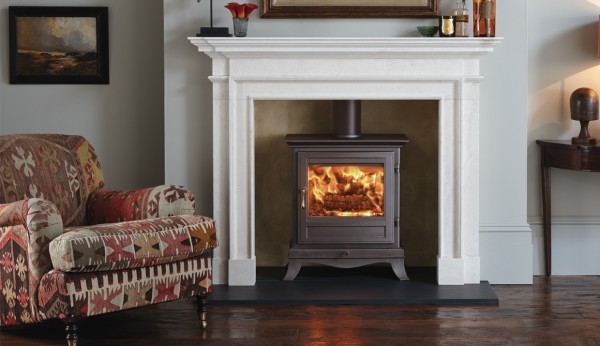
Stoves and fireplaces have long been the heart of a home, providing warmth, ambiance, and a cozy retreat from the cold. Whether you’re considering installing a new stove or fireplace or upgrading an existing one, understanding your options can help you make the best decision.
This guide will explore everything from the different types of stoves and fireplaces to installation tips, maintenance, and energy efficiency. We will also look at modern trends, eco-friendly choices, and the best places to purchase stoves Northallerton.
Why Choose a Stove or Fireplace?
A stove or fireplace can serve multiple purposes:
- Heating: Provides efficient warmth, reducing reliance on central heating.
- Aesthetic Appeal: Adds charm and character to a room.
- Energy Efficiency: Modern stoves offer excellent fuel efficiency and eco-friendly heating options.
- Property Value: A well-designed stove or fireplace can increase home value.
- Eco-Friendliness: Newer models offer reduced emissions and higher energy efficiency.
- Cost Savings: Over time, they can lower heating bills, especially when using alternative fuel sources.
Types of Stoves
1. Wood-Burning Stoves
Wood-burning stoves are a classic choice that provides strong, consistent heat. These stoves are ideal for homeowners who have easy access to firewood.
Pros:
- Traditional aesthetic appeal
- High heat output
- Can operate without electricity
- Renewable fuel source
Cons:
- Requires regular cleaning and maintenance
- Needs a chimney or flue
- Can produce emissions if not EPA-certified
- Can be restricted in certain areas due to smoke regulations
2. Multi-Fuel Stoves
Multi-fuel stoves offer flexibility as they can burn wood, coal, or smokeless fuels.
Pros:
- Versatile fuel options
- More efficient than traditional wood-burning stoves
- Ideal for areas with fuel restrictions
- Longer burn times with coal compared to wood
Cons:
- May require different grates for different fuels
- Can be more expensive upfront
- Ash disposal required frequently
3. Gas Stoves
Gas stoves provide a hassle-free heating option with minimal maintenance.
Pros:
- Easy to operate with a switch or remote
- No need for wood storage
- Cleaner burn with fewer emissions
- Can be used in smoke-controlled areas
Cons:
- Requires a gas connection
- Less heat output compared to wood-burning stoves
- Higher operating costs due to gas prices
4. Electric Stoves
Electric stoves are an excellent choice for convenience and safety.
Pros:
- No installation hassles
- No emissions or fumes
- Can be used year-round for ambiance without heat
- Safe for homes with children and pets
Cons:
- Dependent on electricity
- May have higher running costs
- Less powerful than traditional stoves
Types of Fireplaces
1. Traditional Wood Fireplaces
These fireplaces bring a rustic charm and powerful heat.
Pros:
- Authentic and visually appealing
- Can be used during power outages
- Renewable heating source
Cons:
- Requires frequent cleaning
- Lower energy efficiency compared to modern alternatives
- Can lose heat through the chimney if not well-sealed
2. Gas Fireplaces
Gas fireplaces offer the ambiance of a real fire without the maintenance.
Pros:
- Convenient and low-maintenance
- High energy efficiency
- Works even during power outages
Cons:
- Requires professional installation
- Dependent on gas supply
- Less realistic flame appearance compared to wood-burning options
3. Ethanol Fireplaces
A modern and eco-friendly option that doesn’t require a chimney.
Pros:
- Clean burn with no smoke
- Can be installed in any room
- Easy to use and maintain
Cons:
- Higher fuel costs
- Less heat output than wood or gas options
- Requires proper ventilation despite not needing a chimney
Installation Considerations
- Location: Decide whether the stove or fireplace will be a primary heat source or a secondary feature.
- Ventilation: Ensure proper venting to prevent carbon monoxide buildup.
- Local Regulations: Check building codes and restrictions, especially if you are installing a wood-burning stove.
- Professional Installation: Hiring a certified installer guarantees safety and compliance.
- Safety Measures: Install smoke and carbon monoxide detectors nearby.
- Floor Protection: Use heat-resistant pads for safety and fire prevention.
Energy Efficiency & Cost Savings
- Choose an EPA-certified stove to ensure optimal efficiency and lower emissions.
- Use seasoned wood (for wood-burning stoves) to improve burn efficiency.
- Install a programmable thermostat to control heat distribution.
- Seal leaks in the chimney or flue to prevent heat loss.
- Upgrade to modern, insulated flue liners to increase efficiency.
- Consider heat-powered fans to distribute warmth more effectively.
- Use government incentives to offset installation costs of eco-friendly models.
Where to Find Quality Stoves in Northallerton
If you’re looking for stoves in Northallerton, several reputable suppliers offer a range of high-quality stoves and fireplaces. Check out local showrooms for expert guidance and installation services. Online retailers also provide a variety of options, with customer reviews helping you make an informed decision.
Conclusion
Stoves and fireplaces add warmth, beauty, and efficiency to any home. Whether you prefer the traditional charm of a wood-burning stove or the convenience of a gas fireplace, choosing the right option can enhance both comfort and value. If you’re considering a stove in Northallerton, visit local retailers for personalized

